As an Amazon Associate I earn from qualifying purchases.
If there’s a simpler, more rustic meat-and-potatoes dish than Lancashire hotpot, I’m not sure what it is. My rendition is a venison hotpot, but the traditional dish uses mutton or lamb. Easy, classic, cold-weather comfort food.
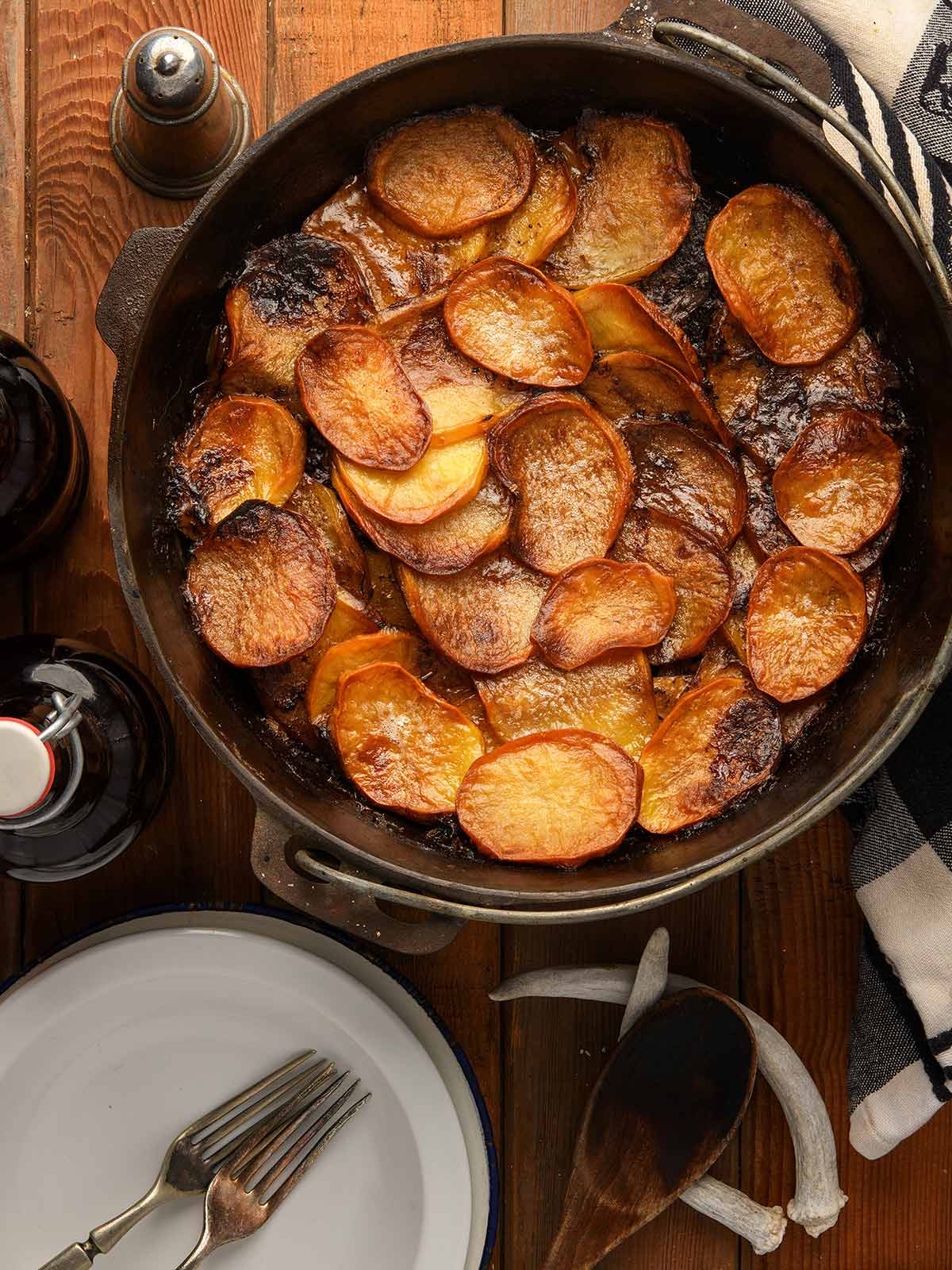
Lancashire hotpot has its origins nearly 200 years ago as a dish of poor textile workers who would put this on the hob before work, eating it when they came home. It is best slow cooked, and since the recipe is so simple, technique matters here, similar to beer braised short ribs.
Poor technique and you will have gross cafeteria food. Do it right and you will be amazed at how something so simple can taste so good.
What is Lancashire Hotpot?
Dumb question for Britons, since this is a classic there. But for Americans, Lancashire hotpot is a one-pot stew of sorts that is made in layers of meat, onions and potatoes, flavored very simply with stock, Worcestershire sauce, salt and pepper, and maybe a little dried herb.
It’s how you make it that matters.
Ingredients
The meat in Lancashire hotpot is normally lamb these days, but that’s a poor choice in my opinion, although lamb neck is OK. Mutton is better, and venison better still. Why? A venison hotpot mimics the flavor and toughness of mutton, which can be fiendishly hard to find now.
You will see various cuts used, from loin cutlets to my favorite, neck meat. You want a tough cut to stand up to long cooking, and it’s the long cooking that transforms this into a lovely meal.
The meat is either sliced into slabs of about 1/2 inch thick, or chunked. You salt it, dust in flour and brown before stewing.
Ditto for the kidneys. The wha?! Yep, Lancashire hotpot often has kidneys in it, and this is an excellent use of venison kidneys — along with that other British classic, steak and kidney pie, which has similar flavors to Lancashire hotpot. (Deviled kidneys are lovely, too.)
You can skip kidneys if you want to, but I like them as an additional knob of goodness in the hotpot.
Onions are the standard yellow storage onion, and potatoes can suit your fancy. I prefer waxy yellow potatoes like Yukon gold, but either these or floury russets will do fine. The main difference is that waxy potatoes will hold their shape better, while floury ones will dissolve and make the underlying stew richer.
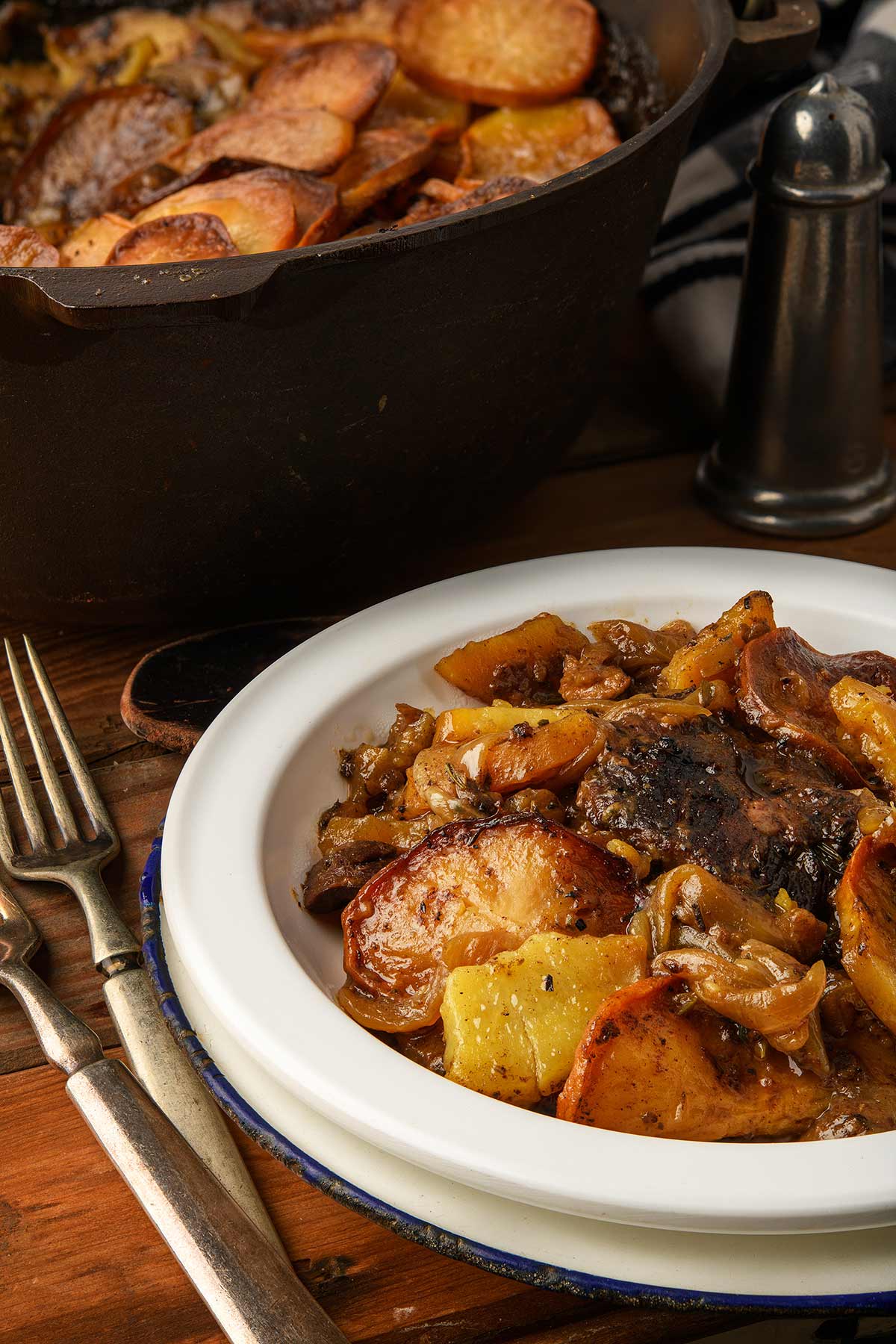
Making Lancashire Hotpot
It is very important with a stew this simple that you take your time and do each step with care.
Salt the meat well. Flour it, shaking off excess. Brown it really well over medium-high heat. This step is important, and takes a while, so don’t rush it.
Same for the onions, which need to be not quite caramelized, but definitely browned well.
The potatoes should be cut by hand if you are making a venison hotpot because venison takes longer to cook than lamb, so you will need more time in the oven, Thin, mandoline-cut potatoes will break up under such long cooking.
I advocate an “herb of the day,” in this case thyme, savory, rosemary, sage or lovage. Choose only one. Remember, Lancashire hotpot is a simple dish.
Once all your browning is done, you can either cook the hotpot in a Dutch oven as I do, or move everything to a slow cooker.
What to Serve Alongside?
Hotpot is a simple dish, but it is rich. I prefer a simple salad of bitter greens alongside, and/or pickles. Something bright to wake things up on a cold night.
Once made, Lancashire hotpot will keep in the fridge for a week. I’ve not tried freezing it.
Other British Classics
Other than the aforementioned steak and kidney pie and deviled kidneys, you might also like these other classics:
- Cottage pie with venison. A simple stew topped with mashed potatoes.
- Mince and tatties, a Scots favorite.
- Venison Scotch broth, made with shanks and lots of vegetables.
- Fish pie with leeks. Very similar to shepherd’s pie, but with fresh and smoked fish.
If you liked this recipe, please leave a ⭐️⭐️⭐️⭐️⭐️ rating and a comment below; I’d love to hear how everything went. If you’re on Instagram, share a picture and tag me at huntgathercook.
Lancashire Hotpot
Ingredients
- 2 to 3 pounds venison, mutton or lamb neck, boneless
- 3 to 5 venison or lamb kidneys, cleaned (optional)
- Salt and pepper
- Flour for dusting
- 1/4 cup lard, bacon fat, butter or oil, divided
- 3 cups sliced onions
- 2 teaspoons dried thyme or savory
- 2 cups beef or venison stock
- 1 to 2 tablespoons Worcestershire sauce
- 1 1/2 pounds potatoes, peeled and sliced thin (see below)
- 3 tablespoons melted butter
Instructions
- Slice the neck meat into slabs about 1/2 inch thick, then again into big chunks. Cut the kidneys into pieces about the size of the last digit of your thumb. Salt all the meat, then dust it in flour.
- Heat half the lard, bacon fat or other cooking out in a large Dutch oven over medium-high heat. Brown the kidneys well, stirring once in a while. Remove and set aside. Brown the rest of the meat in batches. Do not crowd the pan, and take your time on this. You want a really nice browning. Add more fat as you go if you need to so nothing blackens. This process can take 15 to 20 minutes. Remove the meat as it browns.
- Add all the onions to the pot and stir well. Use a wooden spoon to scrape up all the browned bits. Brown the onions well, salting them as they cook. As they cook, preheat the oven to 325°F. When the onions are done, turn off the heat on the stovetop.
- Remove most of the onions, leaving a thin layer. Add a layer of venison and kidneys, then some sliced potatoes (use the knobby ends here), a little dried thyme and a splash of Worcestershire. Top with more onions and repeat with another layer. Add enough stock to come about 3/4 of the way up the sides of the stew. Grind some pepper over everything, then top with the remaining slices of potato to form something of a top or lid.
- Brush the potatoes with melted butter and bake uncovered for 3 hours if using venison or mutton, or 90 minutes to 2 hours if using lamb neck. After about 2 hours, you might need to put a lid on the pot to prevent the potatoes from burning. When the meat is tender, serve in bowls with a crisp salad, pickles and some malty beer.
Notes
Nutrition
Nutrition information is automatically calculated, so should only be used as an approximation.
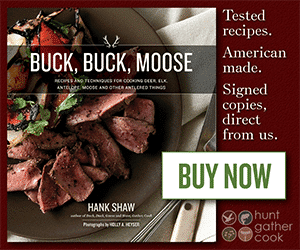


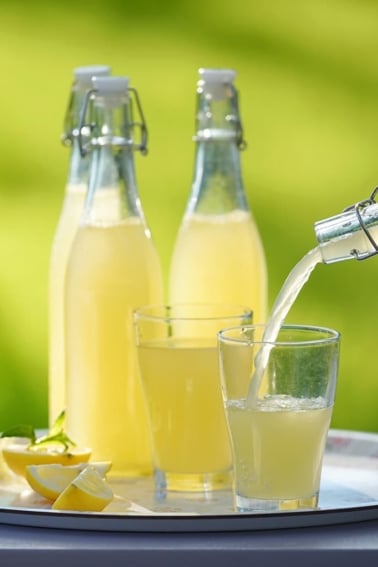

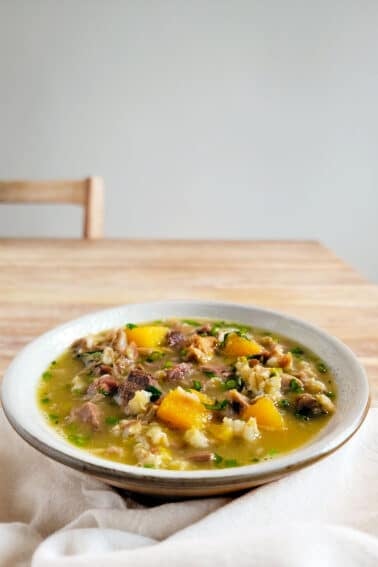

Made exactly as written with venison neck and with dried thyme and cooked 3.5 hrs. It was excellent and something new and different! We always have the simple ingredients on hand so its going to be a great option going forward. Thanks Hank!
Would venison liver work as a substitute for kidney’s in this recipe? I have a ton of liver but no kidneys…
I made this using beef heart and beef cheek meat. I trimmed the fat, cubed the meats, and marinated them overnight in goat’s milk, red wine, and fresh rosemary. I then followed the rest of the recipe. It came out perfect! Very delicious! Thank you for posting it.
Just made one with mutton. One of my favorite ways to use kidneys.
Hi Hank, so a question for you which I’ve thought about a lot and am still pondering. Do we know when browning the meat before putting it on for a long, slow cook started? It just seems like extra (and therefore of questionable necessity) time and fuel in times past where both were quite precious, so I’ve wondered about the history of this practice.
Best wishes!
Susan
I should let Hank respond first, but in many dishes I think it is Very necessary, as it brings out both aroma and flavor. It is known as Maillard reaction, a chemical ‘event’ that involves proteins and sugars in food reacting under high heat/browning, to create more complex and delicious flavor and aroma. It’s a pretty complex chemical process, similar to caramelization, but not quite the same.
I don’t brown the meat I put in my beef-vegetable-barley soup, but if I am in any other way braising, I do.
As for your original question of When it started … I don’t know, but Can imagine many fun scenarios going all the way back to the Lascaux cave paintings!
Susan: It is age old. It is believed to have started in prehistory, when meat left over from roasting over the fire was cooked in a lined pit with water and hot rocks to boil it. Generally speaking, the additional step adds a huge amount of “brown,” Maillard reaction flavor to a dish, so in many, but not all, cases, the additional step is welcome. But some cultures don’t do this, and others go back and forth with it.